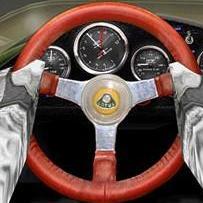-
Posts
5,195 -
Joined
-
Last visited
Content Type
Profiles
Forums
Events
Gallery
Everything posted by Bainford
-
Yup, I noticed it yesterday on my work PC, and it's worse today.
-
Like Patrick, I find flat black enamel difficult to remove, and purple cleaners seem to do nothing. It may help to sand some of the paint thickness away. Brake fluid is the most potent stripper in my arsenal, so I would go straight to that. Expect a long soak, and maybe pull it out every couple days to scrape the surface. That may help. Regardless of the stripper, if you are successful, don't expect clean plastic. There will be black staining, and a panel scriber will be needed to clean out the panel gaps and shut-lines and other crevices. There is a bespoke paint stripper that is mentioned frequently on the forum, the three letter name escapes me right now. I've not used it, but according to others on here, it seems to be very potent. It's a product you brush on rather then soak in it, as soaking will ruin the plastic. Hopefully someone will chime in with the name. EDIT: The stuff I was thinking of is Testors Easy Lift Off (ELO) Also, I just read a thread on a product called QCS Stripwell that looks very promising.
-

1968 Corvette L88
Bainford replied to Gramps46's topic in Other Racing: Road Racing, Salt Flat Racers
I'd say you nailed it, Gary. That's one tough looking Vette. Very nicely done. -
Beautiful Camaro, Eric. The colour makes for a stunning model. All round great looking Camaro. Very well done.
-
Nice Satellite, Oliver. I like the clean style. Well done. What brand is the paint? I have a 1:1 car painted tawny gold and would like to build a replica of it, but having trouble finding the right colour.
-
Very tidy Country Squire. It's great to see these old kits built, especially when done as well as this one.
-
Very cool Boss 429, Gil, and in one of my favourite '69 Mustang colours, too. Nice work on the paint daubs, etc. Very well done.
-
Super cool Escort. Love it!
-
Beautiful Rolls, Mario. You did a great job replicating this magnificent car. Well done.
-
It already looks a bit Midget-like with the front chopped off. I built the B a couple years ago, and during final assembly I was constantly struck by how much the back half of the thing looked like a Midget.
-

Chasing high and low spots?
Bainford replied to Dpate's topic in Model Building Questions and Answers
Thanks for mentioning that, Brian. Surprisingly, I rarely see this point mentioned during discussions on body prep. Years ago when I first started polishing paint, I would often burn through at door shut-lines and panel gaps. I eventually came to realise that there is a proud edge at panel gaps and shut-lines, and that's when I started block sanding the bodies during the prep stage, paying particular attention to all shut-lines. It may also be worth mentioning that, even when these edges are properly knocked down with block sanding, sometimes the paint itself can 'stand up' and form a raised edge at these shut-lines, that will require block sanding during the colour sanding process. This is especially true if you apply paint fairly heavily or use spray bombs. FWIW, my sanding block is a vinyl drafting eraser with fine sand paper wrapped around the end, always used wet. -

Chasing high and low spots?
Bainford replied to Dpate's topic in Model Building Questions and Answers
Yup! -
Cool save. Nicely done.
-
Very interesting project. It could be a tough conversion. Good luck, I'm watching.
-
Nice work, and fantastic style. It sits perfectly, and the wheels fill the openings just right. Excellent work so far.
-
Agreed, so long as they tool up a set of accurate 'Power By FORD' stamped valve covers. I've been waiting for a decent set of those forever.
-
Good looking Toronado. Love the colour. It turned out great.
-

Super Gas '77 Vega--Completed! (11/12)
Bainford replied to Straightliner59's topic in WIP: Drag Racing Models
Looking good, Daniel. It sits just right. The Vega drag cars of this era had a great look. -
I've had my Badger 200 apart many times, and found to be completely free of fur every time. My guess is whatever you found shouldn't be there. Where did you see this stuff? Is it in the paint passages from the bottle to the tip, or in the air passages, or...?
-

Mack superliner crew cab wrecker.
Bainford replied to The Brush's topic in WIP: Model Trucks: Big Rigs and Heavy Equipment
The Mack is looking fantastic. Cool project. -

1954 Ford C 800
Bainford replied to leafsprings's topic in WIP: Model Trucks: Big Rigs and Heavy Equipment
Great looking old Ford. I’m digging this project. -
Very nice Torino. Tidy work. Well done.


